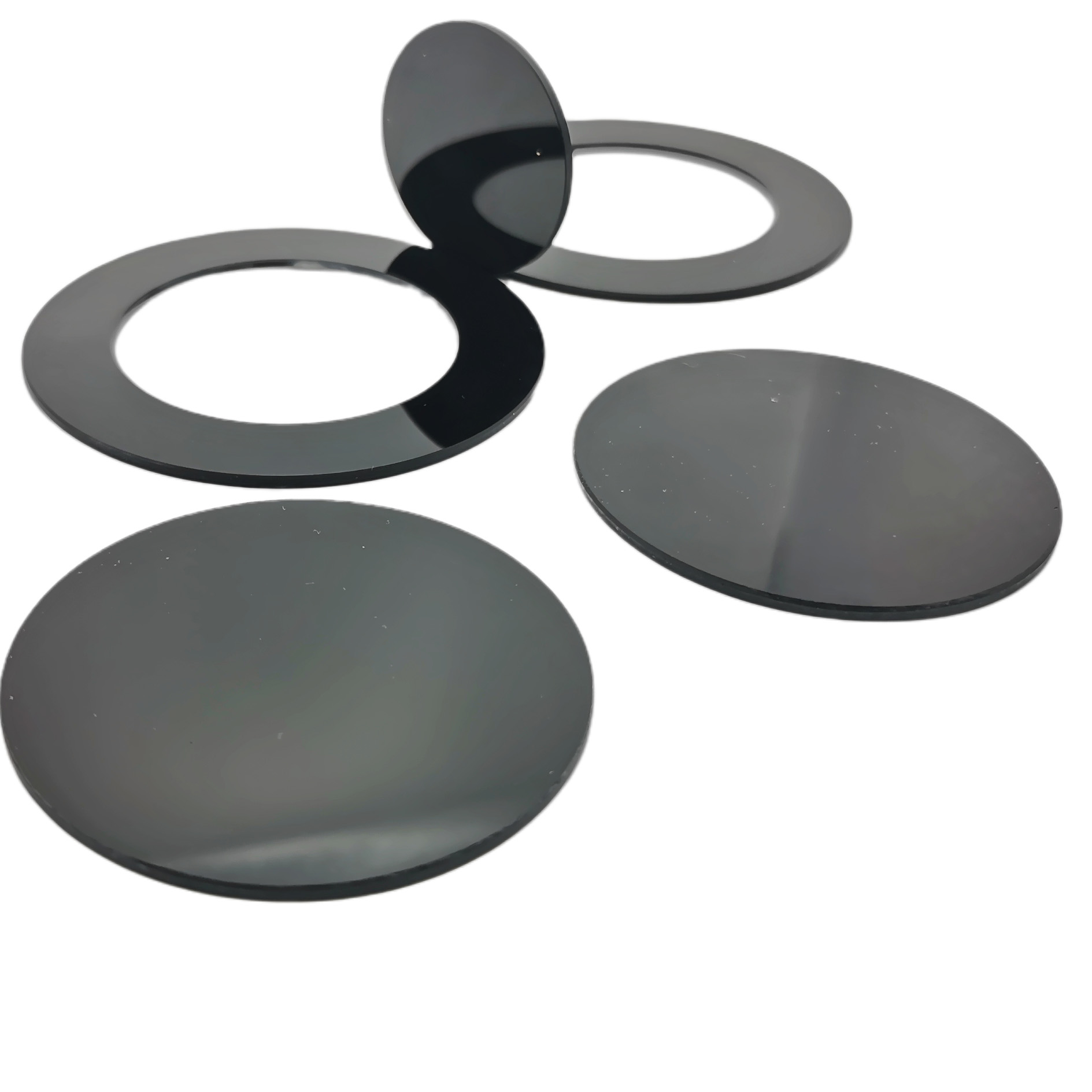Optical properties
High UV transmittance: ZWB2 UV glass has high transmittance in the UV band of 265nm-410nm, with a peak band of 365nm and a transmittance of more than 80% at a thickness of 1mm. This enables it to effectively allow UV light of a specific wavelength to pass through, providing convenience for applications that require UV light sources.
Strong visible light absorption ability: It can filter out visible light greater than 450nm, presenting a black appearance, which can greatly reduce the interference of visible light and ensure the purity of UV light
Application fields
Medical field: In medical imaging equipment, such as ultraviolet irradiators and ultraviolet therapy devices, ZWB2 ultraviolet glass can be used to filter out ultraviolet light of specific wavelengths for the treatment of skin diseases and the promotion of vitamin D synthesis.
Industrial field: Used in ultraviolet curing equipment, ultraviolet sterilization equipment, etc. For example, in the printing industry, ultraviolet light filtered by ZWB2 ultraviolet glass can quickly cure inks, coatings, glues, etc., improving production efficiency and product quality.
Scientific research field: Commonly used in scientific instruments such as ultraviolet spectrometers and fluorescence microscopes to study the optical properties and fluorescence properties of materials. For example, in material science research, ultraviolet light filtered by ZWB2 ultraviolet glass is used to irradiate materials, observe the fluorescence emission of materials, and analyze the structure and properties of materials.
Geological survey: Many minerals emit fluorescence under ultraviolet light. Filters made of ZWB2 ultraviolet glass can help geologists observe the fluorescence phenomenon of minerals more clearly in the field, thereby assisting the exploration of mineral resources.
Nondestructive testing: In industrial production, it is used to detect defects inside materials, such as cracks or corrosion. UV light can activate fluorescent dyes or penetrants to make them glow in the dark. When the UV light filtered by ZWB2 UV glass is irradiated on the object being tested, the defective parts can be displayed more clearly.
Compared with other models
ZWB1: The transmission peak is around 313nm, mainly used to transmit short-wave ultraviolet rays. Compared with ZWB2, its ultraviolet transmittance is lower at 365nm, and its ability to absorb visible light is relatively weak.
ZWB3: It has a relatively high transmission at 254nm, and the wavelength of the transmitted ultraviolet rays is shorter. It is different from the long-wave ultraviolet transmission characteristics of ZWB2, and its visible light absorption ability is very strong, making it almost impossible for the human eye to see the light passing through the glass.

